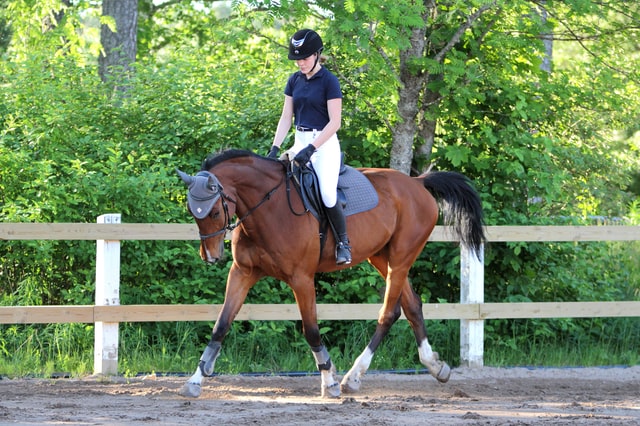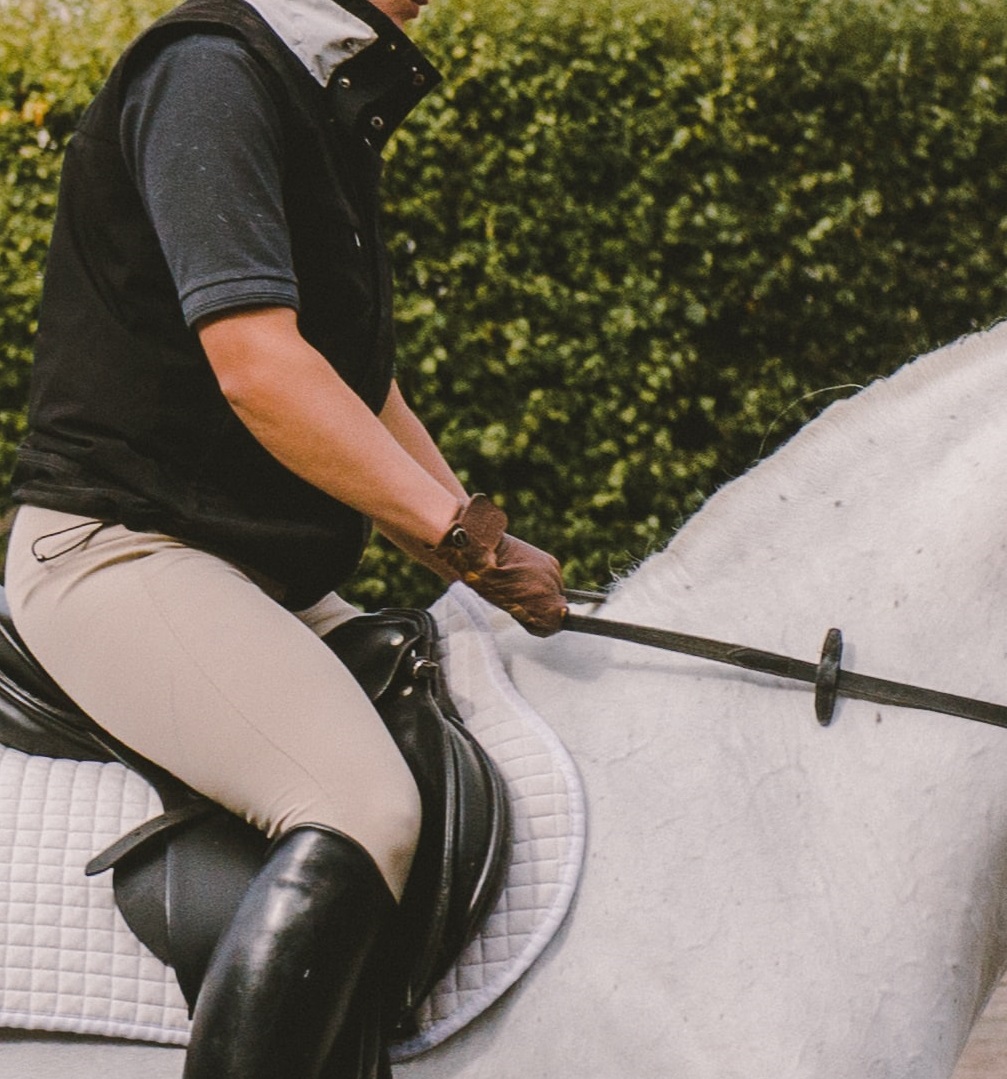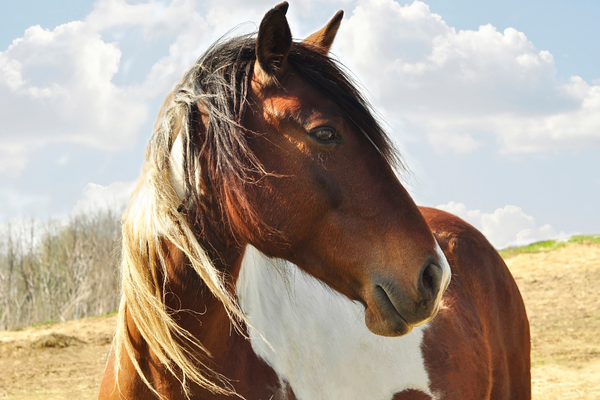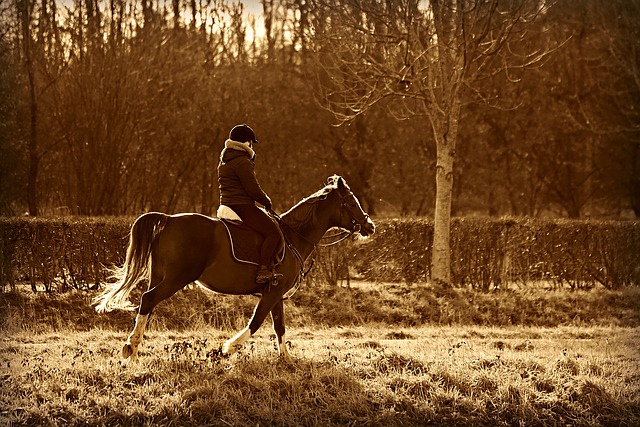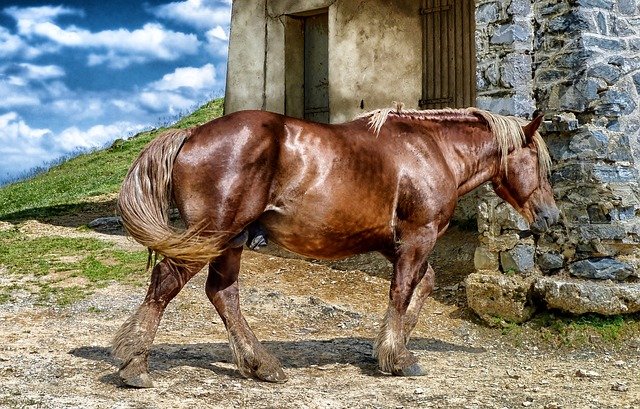How to Properly Train Your Horse to Back
Whether you call it “backing”, “backing up”, “going backwards”, “rear back” or “rein back”, training your horse to back is one of those fundamental stepping stones (or Cornerstones, if you will), to having a well trained horse.
While “backing” your horse, or getting him to go backwards seems like a no-brainer, it’s actually a very difficult task you’re asking of your horse that demands athleticism and complete obedience.

It can be difficult to train properly, and should be done with caution.
For this reason, we’re dedicating an entire blog post to training your horse to back.
What is the Back?
The “back” is considered a gait, just as the walk, trot and canter are.
The proper back will have the diagonal pairs of feet moving simultaneously in reverse.
For example, the left front and right hind will move together and vice versa.
Because a horse’s angle of vision prevents him being able to see well behind him, a horse will naturally only ever go backwards a step or two to get himself out of a tricky situation.
Some horses would rather rush forward through danger as opposed to risking backing up.
Hence the horses that will rush through fences or gates or brambles instead of backing up and turning around.
In order to back, the horse must first pickup contact with the bit and engage his abdomen and hind end.
This requires a lot of obedience, concentration and muscle toning to perform correctly.
It is very easy to do incorrectly.
Why Train Your Horse to Back Up?
Training your horse to back up on the ground not only strengthens your communication and bond, is vital when training a horse to load and can be monumental during a safety situation.
I once had a mare wrap her tail around the hook for a bucket in her stall. She began walking out of the stall but got caught halfway out of the threshold by her tail and started to panic. Because she was trained to back, I was able to back her into the stall and had a chance to untie her tail. Had she not known how to back on the ground, she would have lost half of the hair on her tail.
Lauren
In addition to training for the back on the ground, riding the back (or reining back) is used in all Western performances, second-level dressage and introductory working equitation.
How to Train Your Horse to Back From the Ground
Since it is a complex movement, and is a fairly unnatural movement for a horse, it can be quite difficult to train correctly.
If you’re working with a green horse or complete baby, we recommend starting the training of the back from the ground.
There are several different methods for training the back which we present to you so that you will have a full range of options to choose from.
Every horse is different, every rider is different, and even discipline is different. Consider these different training techniques different tools in your toolbox. Give one a try, but if your horse doesn’t seem to respond, or it doesn’t feel right to you, try another one! There’s no one right way to train a horse.
Susanna
Training Your Horse to Back With a Halter and Touch
Standing by your horse’s shoulder, face his tail, and deliver short, soft jerks to the leadrope down and towards his chest while saying “back”.
(Or any other variation of the command you’re most comfortable using).
Gradually increase the strength you use until your horse begins to think of going backwards.
In the beginning, he may not actually move his feet at all, but if he tenses his muscles as if he’s about to move, or shifts his weight backwards at all release pressure and praise him.
Look for him to lick his lips, as this means he’s mentally processing what just happened.
Practicing this five minutes a few times a day will get you a lot farther, a lot faster, than drilling your horse on it for too long.
Another variation on this is jabbing him in his pectoral muscles, gradually increasing the pressure, until he thinks about moving.
Reward the slightest effort with a release of pressure and praise.
How to Train the Back From the Ground the Natural Horsemanship Way
Whether you follow Clinton Anderson, Parelli, or Monty Roberts, natural horsemanship is merely another training tool in your toolbox.
Armed with a lunge line and a stick or whip, there are several ways to train the horse to back from the ground.
Facing your horse with line and stick, with plenty of slack in the rope, begin marching forward while waving the stick up and down in the air in front of his nose with the rhythm of your steps – often this is enough to encourage a horse to back up.
If he even shifts his weight backwards, stop and reward him!
If he doesn’t move, begin tapping the line with increasing pressure.
If you must, tap the clip where the line attaches to the halter.
Second Method for Training Your Horse to Back Using Natural Horsemanship
Facing your horse with your shoulders squared up to his, lean forward, and jiggle the leadrope back and forth so that the buckle where it attaches to the halter shakes.
Increase your intensity, while walking towards your horse, until he begins to back up.
If your horse doesn’t react to this, begin wagging your stick right to left in front of yourself while walking towards the horse.
Your horse does not want to be hit by the stick – and hopefully you won’t have to.
If he still does not respond, however, don’t be afraid to tap him in the chest with the stick.
Riding the Back
Now that your horse has mastered the back from the ground, you can begin to ask for the back from the saddle.
The first thing to know is to never start the back with the bit.
If your horse is standing still, naturally, he will have most of his weight on the forehand, his muscles will be relaxed and he will not be in the frame of mind to move.
He may back up if you were to ask for a back right now, but it would be lazy, uncoordinated and likely one-sided.
To ask for the back, we will first gather our reins and sit up a little straighter in the saddle.
Often, this is enough to let our horse know we’re about to ask for something.
Keeping even weight on both seat bones, engage your core and pelvic floor, tilt your pelvis underneath you and bring your seat bones forward, elongating your lower back.
Pick up even contact with the reins, apply equal pressure with both legs at the girth, and maintain a steady hand.
Your legs aids are telling your horse that movement is expected, but rein aids are telling him to not move forward.
Naturally, the only option is backwards.
Once the horse has yielded at his jaw and poll and begun shifting his weight backwards, lighten the rein aids as a reward but maintain enough contact to keep him engaged.
To finish the back, release the rein aid and, unless necessary, allow your horse to move forward freely.
Because the back is so physically demanding, only ask for a few steps at a time.
This will allow him to build up his coordination and strength before backing long distances.
This will help avoid developing issues while backing, which leads to our next segment:
Trouble Getting the Horse to Back
Like all aspects in training, there are opportunities for things to go wrong.
Your horse may simply refuse, may back up crookedly, may rush backwards and may even learn to use the back as an avoidance behavior.
If your horse refuses to back up, but he backs well on the ground, try alternating reins and/or light bumping with your leg aids.
See-sawing the reins or thumping your horse’s sides is not necessary, simply open and close your fingers and nudge gently with your heels.
If that still doesn’t work, go back to the ground. If need be, back your horse from the ground with a rider giving the rein and leg aids simultaneously.
If your horse backs up crookedly, try backing him against a rail or fence on the side he prefers to back to.
After he gets the hang of that, try backing between two ground rails, or simply apply more leg aids on the side he tends to lean on.
If your horse throws his head up when you ask for the back, double check that your bit and bridle fit correctly and are not causing him discomfort when you apply rein pressure.
If you’ve covered all of your basics but you’re still having trouble with your horse – feel free to sign up for our newsletter (below) which will give you free access to us – simply reply to your welcome email and let us know what problems you’re having!
We’d be happy to help you troubleshoot.
Conclusion
Training your horse to back up is one of the most fundamental training skills every well-rounded horse must have.
Not only is it required in some disciplines, but aids in trailering, safety, opening gates from the saddle, and more.
While fundamental, backing requires physical and mental discipline and maturity from a horse and must be taught properly, with patience.
With the step-by-step instructions above, and a methodical, incremental approach, the back can be taught to any horse in any discipline.
Happy riding!
